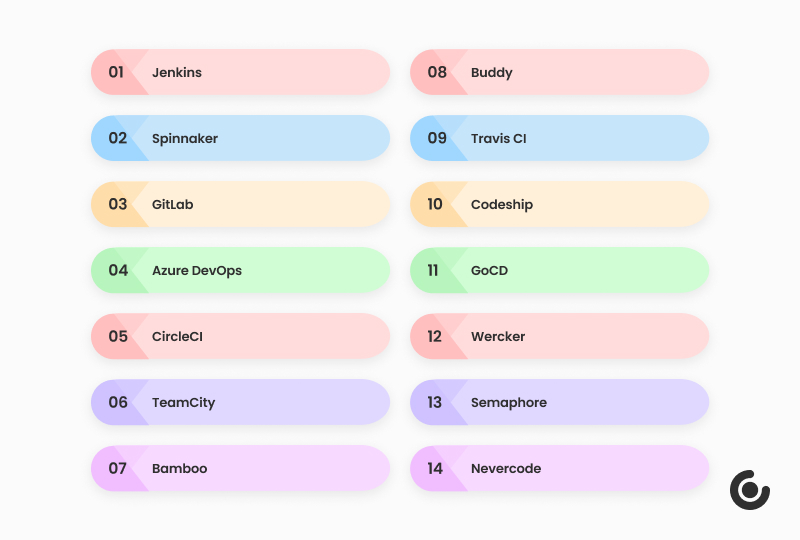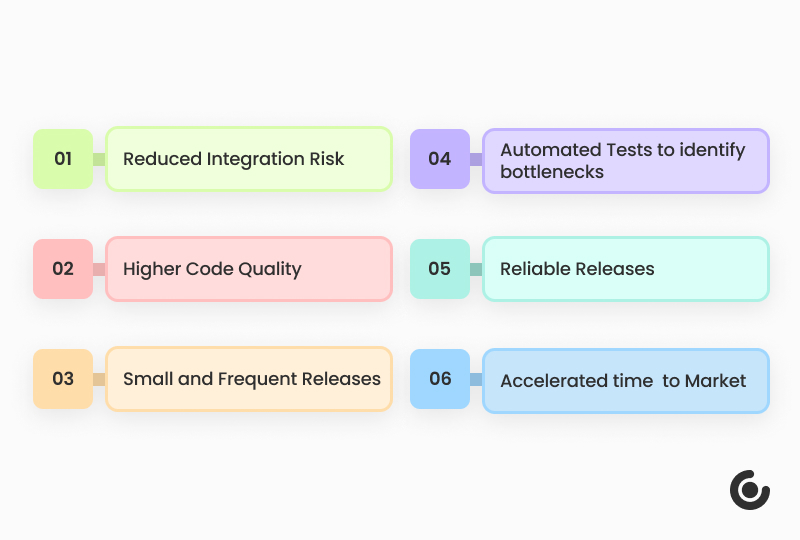What is CI-CD in DevOps? Know the Basics.

Table of Contents
We have been hearing about this buzzword for a long time now, so what exactly is CI/CD? Before diving into what CI/CD is, let’s first understand why and how it came into the picture in the first place?
What Pain Points Exist in Conventional Software Development?
Since the dawn of the IT / Software industry, building and releasing software has been a painful task as it involved long discussions revolving around the Infrastructure needs with IT and Operations teams. They had to procure the required infrastructure to deploy the servers. Then they had to set up the networks, servers, install the operating system from scratch and configure the servers to make them ready with the required libraries to deploy the application on those servers.
Moreover, the deployment process itself had been a very long and cumbersome process too. It involved getting the downtimes and then taking the entire network and all the systems down to deploy the new piece of the software. Even many issues have been faced by the Operations teams and the deployment process resulted in failure often. This led to roll back the process and plan another effort in a few days’ time.
Imagine how difficult and complex it gets to build and release software in this way! And it’s been happening for years now. This one definitely needs a change.
Ushering in a New Era
With the advent of Cloud Computing, the entire Software industry experienced a paradigm shift as it resolved the hassle of spinning up servers. It provided on-demand access to compute, storage, and networking services over the internet, hence it became really easy for teams to procure and configure servers on the go. It also resulted in the decrease of the capital costs that companies no longer had to bear (the cost to set up their on-prem infrastructures and maintain them).
Know About CI/CD
CI/CD stands for Continuous Integration and Continuous Deployment/Delivery. It is a paradigm that helps us automate the build and release process and make it faster by removing the bottlenecks for quality deliveries.
Before diving into CI/CD let’s see how deployments used to work traditionally.
Traditionally the teams used to work in silos. The development teams used to hand over the build to the testing teams, and then if the testing was successful then they used to hand over the build to the operations team who used to deploy this build into production after requesting downtime. Then it was the matter of a successful deployment or a failure to restart everything to deploy once again.
It was a long and cumbersome process to get a build production as many parameters to need to be considered such as proper build artifact as per the environment, configuration files to ensure that the integration is proper, required libraries/extensions of the respective versions. Hence it was difficult to manage all of these parameters while performing a production deployment and it used to result in failed deployments/releases at times.
On the contrary, CI/CD aims at bringing all the teams together by automating the end-to-end process to deploy right from the development cycle to the testing environment and eventually to production environments. It makes sure that the code is properly integrated right from the development stage itself to ensure that it is tested many times before it gets rolled out into production. With CI/CD in place, we can make sure that the builds get deployed in any environment in an automated manner along with various sets of checks so as to ensure that it’s working fine. Moreover, it also resolves various issues that were being faced with Old School Deployments.
CI/CD can be broken down into two components i.e. Continuous Integration and Continuous Deployment/Continuous Delivery.
Continuous Integration (CI)
Continuous Integration aims at integrating all the code from various different team members into a single source i.e. a centralized version control system, building it, executing some tests on it, and deploying it in dev/test environments. Once the testing is done in lower environments Continuous Deployment/Continuous Delivery comes into the picture which aims at promoting this build into higher environments and then eventually deploying it on production. There’s also a very thin line of difference between Continuous Delivery and Continuous Deployment.
Continuous Delivery
In Continuous Delivery, after all the tests are performed, the build is not deployed to production directly. It requires manual approval or manual action before the build can be deployed into production. This manual intervention can be an approval because in many cases there is some amount of downtime required before the build can be deployed into production. Moreover, we can also make sure that all the checks have passed and deploy the build at an appropriate time, hence Continuous Delivery is a preferred choice for many enterprise-grade applications.
Continuous Deployment
In Continuous Deployment, it is suggested that once the testing is done then the build can be deployed/released to production in an automated manner without the need of any manual intervention, it is a preferred choice for small scale applications and for those which are crafted in a way to adapt zero downtime deployments or the ones which do not require heavy downtimes.
Hence CI/CD aims at automating the workflows of building, testing and deploying software into various environments. This can be achieved by creating CI/CD pipelines using various popular tools such as
- Jenkins
- Spinnaker
- GitLab
- Azure DevOps
- CircleCI
- TeamCity
- Bamboo
- Buddy
- Travis CI
- Codeship
- GoCD
- Wercker
- Semaphore
- Nevercode
CI/CD Pipelines comprises of following stages, although it depends on application requirements:
The build is triggered when a new change is pushed onto the version control system. As soon as the build is triggered, it performs a checkout of the latest source code, builds it, performs some automated tests on it such as Code Quality Analysis, Security Scanning, Unit Tests, Integration Tests, etc. Once the testing is done and the build is ready to be deployed to a respective environment, this process repeats for all the environments. The build finally is deployed into production, with custom notifications. For example, in Email Notifications/Notifications in various chat applications- such as Slack- the team can be notified of the progress of the CI/CD pipeline.
Benefits of CI/CD in Software Development
- Reduced Integration Risk
- Higher Code Quality
- Small and Frequent Releases
- Automated Tests to identify bottlenecks
- Reliable Releases
- Accelerated time to Market
Hence with DevOps processes such as CI/CD, we can ensure that we can perform the releases in a smooth and consistent manner. However, one needs to ensure that it is implemented in the correct manner with best practices to ensure the Code Quality and reduce the release time to market.
If you are willing to know more and are looking for the right DevOps consultation, services, and solutions? Contact our DevOps engineers now!






